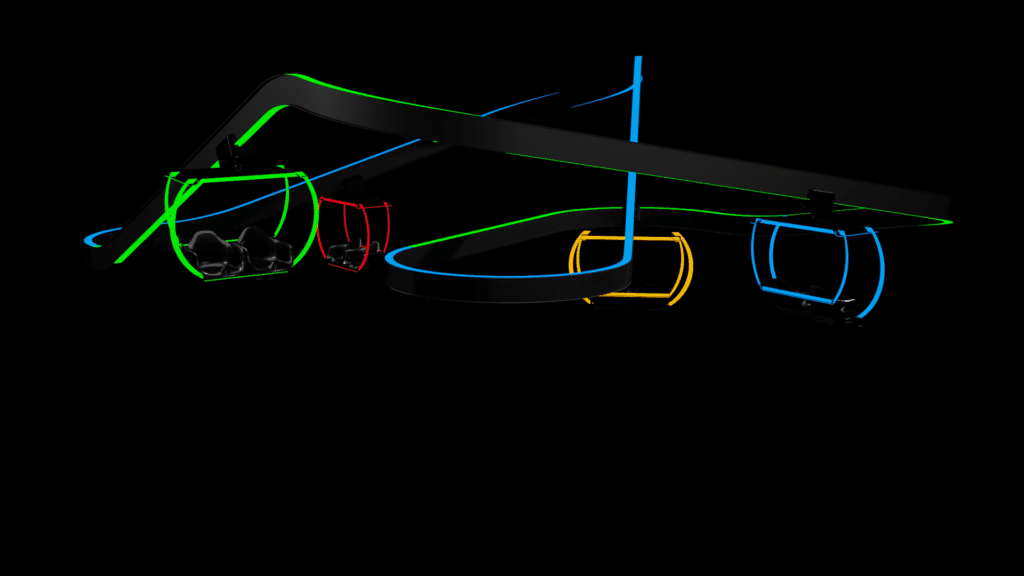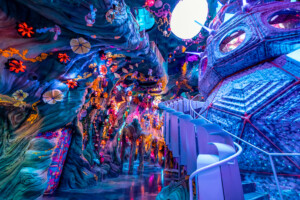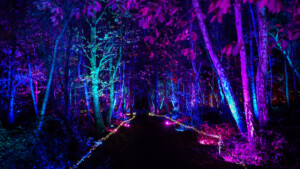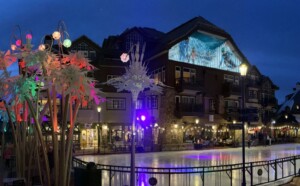Lasers produce the purest, most concentrated light on earth. When this light is harnessed for entertainment and displays, the result is a spectacular show that dazzles an audience with out-of-this-world wonder.

The International Laser Display Association represents the industry’s leading group of professional laser show producers and suppliers. The association was founded in 1986, about a decade after laser shows first became popularized.
A Brief History Of Laser Shows
One of the very first display applications was the well-known “Laserium” show presented in planetariums. In 1973, filmmaker Ivan Dryer had tried to capture the ethereal beauty of laser light in a movie. But the film stock could not record the glittering coherent light and its saturated colors.
He decided to bring lasers into a darkened environment – the planetarium – and to set the colors swirling to music and a star background. Laserium, as he dubbed the result, was an instant hit.
In fact, it became the longest-running theatrical attraction in Los Angeles, marking almost three decades from 1973 until the Griffith Observatory was closed in 2002 for a three-year renovation.
Dryer and others soon developed other entertainment uses for lasers. These include:
- Lasers as attractions at amusement parks, casinos and cruise ships
- Lasers as a special effect in concerts
- Laser entertainment and advertising at sporting events, especially world-class events such as major championships and the Olympics
- Laser displays at conventions and other corporate theater
- Laser lighting in discos and nightclubs
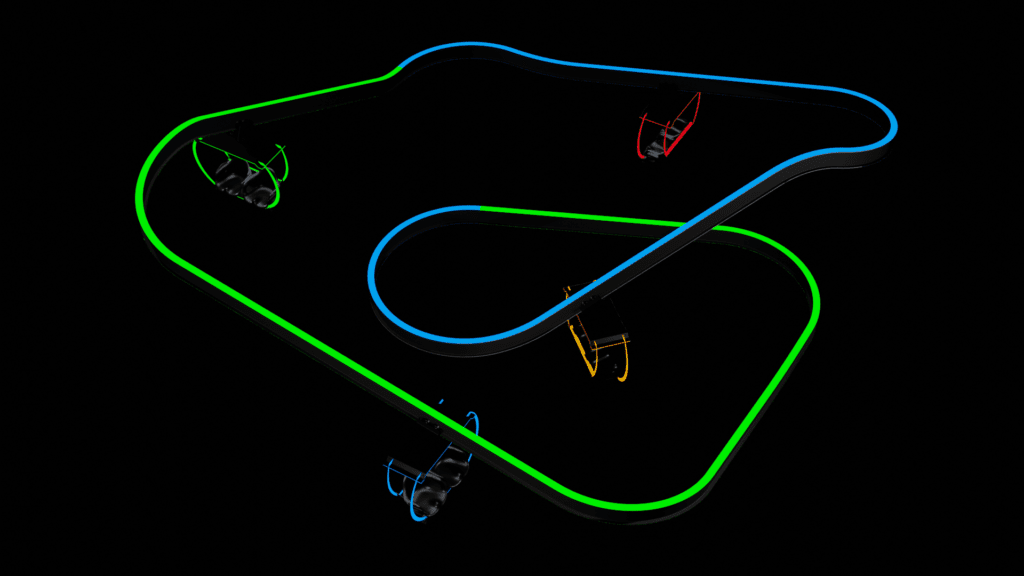
Lasers grew in popularity throughout the 1970s, 80s and 90s. They reached their peak with the worldwide millennium celebration of 2000. Since then, laser displays have been eclipsed a bit by large-scale TV-type displays. However, even large TVs remain just that – a larger version of what everyone has in their living room.
The Advantage Of Laser Light
The primary advantage of laser light is that it truly is a unique high-tech lighting source, not normally seen by the average person.
This makes lasers perfect for special applications and events. There are two main types of laser displays: beams and graphics.
For beam shows, the laser light is seen in mid-air, either as glowing beams or scanned to create simple shapes such as cones and planes of light. What makes beam shows especially effective is the tiny beam. When used with theatrical fog, a plane of light literally cuts through a 1 cm cross-section of the fog, creating a sharp, eerie pattern of light and dark swirls. From just one laser projector, beams can be targeted to dozens of mirrors, producing a “Star Wars” effect of laser beams shooting throughout the room in different directions.
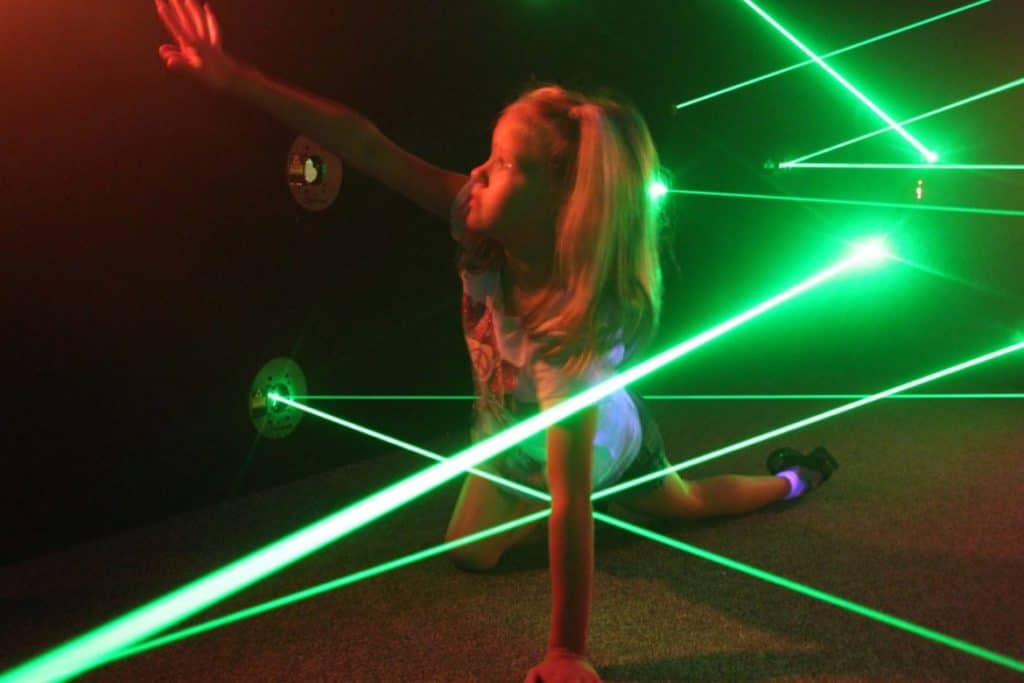
In contrast, laser graphics are projected onto a wall or other surface. The tiny dot made by the beam is moved quickly by computer-controlled mirrors, to draw out images, text and logos. Because the laser is so powerful, the graphics can be projected onto even the largest of surfaces such as a dam or mountain. Recent advances in software allow standard computer 3D drawing programs (3ds max, Flash) to be converted into laser-projected graphics.
Of course, both beams and graphics can be used simultaneously. A popular configuration for corporate shows is to have a central screen where graphics are front- or rear-projected. Flanking the screen on either side is a beam projector, used to send beam patterns out, over – and even into – the audience.
The Most Thrilling Use Of Lasers
The most spectacular laser effect is direct audience scanning. This is a beam show where patterns are scanned into the audience area. The fact that the beams are scanned, and the power is monitored, helps make these shows safe to view.
(In the 30-year history of worldwide laser shows viewed by millions, there have been less than a dozen reported incidents of claimed eye damage. This is a far better safety record than amusement park rides or even slipping on the bathroom rug!)
What does direct audience scanning look like? All around you are moving beams and shapes of light. At times it can be like having a Star Wars battle break out, with too many beams shooting in too many directions to count. At other times, shapes of light surround you.
For example, a single plane of light spanning the width of the audience may have 10 to 100 different colored sections, thanks to precise computer control of the color modulation. Of course, these beams and shapes all move in time to the music, whether slow and subtle or fast and furious. The result has been compared to being inside a fireworks show as it goes off.
This unique effect, which can’t be duplicated by conventional lighting, is probably the most popular use of lasers worldwide. Unlike most other media, which occur far from the audience and are passively enjoyed, audience scanning beams actually reach out and touch the audience. This provides a much stronger emotional link between artist and audience.
Ilda’s Role
Since its founding in 1986, the International Laser Display Association has represented the leading show producers and suppliers, worldwide. One of ILDA’s achievements has been the development of projector and show standards.
Thanks to ILDA, shows made by one company, in one part of the world, will play back perfectly on equipment made by another company halfway around the globe.
ILDA also runs a number of other programs to benefit its members and the laser display industry in general:
- Each year the ILDA Conference presents workshops and seminars on laser display topics. Recent meetings have been held in Rimini (Italy), Las Vegas, Brussels, Orlando, and Stuttgart. Members can exchange ideas, forge partnerships, explore new technologies and see the world’s best displays.
- The annual ILDA Awards recognize the top laser shows and technology from around the world. From 1988 to 2006, eighty different companies and individuals have earned this prestigious honor.
- ILDA promotes the use of laser displays in the international marketplace. The association also represents the industry on safety and government issues.
Creating and producing such shows takes a unique combination of artistic and technical talent. If you are looking for a display company, check ILDA’s website to find professionals dedicated to improving their craft and who pledge to uphold the ILDA Code of Ethics.
The website, at www.laserist.org, also contains resources for potential laser show clients to find out more about this unique artform.
